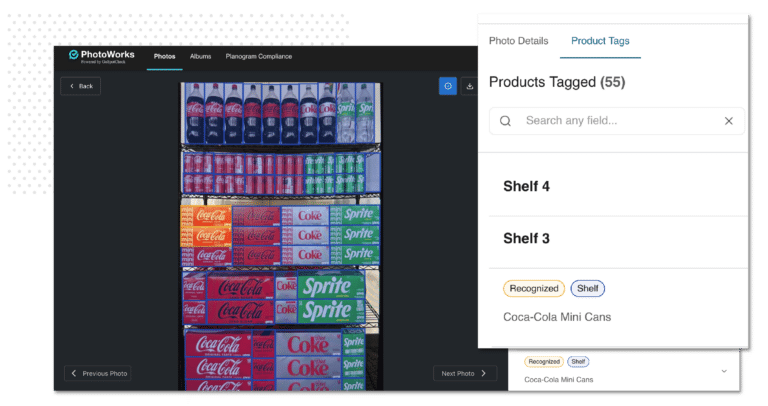Editor’s note – This blog combines and abbreviates the tips and knowledge we published in three previous articles:
- How a Mobile Solution Initiates Action in Your Supply Chain
- Three Ways to Adapt Supply Chains in the Age of COVID-19
For better or worse, COVID-19 dramatically impacted the supply chain. Increased demand exposed vulnerabilities in what many logistics operations believed to be reliable processes. This unprecedented event left visible fractures in the areas of safety, quality, and efficiency.
Given these fresh vulnerabilities, you’ve been given a unique opportunity to re-examine your processes and re-evaluate the tools you use to audit and inspect observable data. If you’re currently using paper or spreadsheets to capture mission-critical information, it’s time to start planning your digital transformation.
Digitizing your processes with an integrated mobile solution is key to becoming more flexible, and it’s a vital component in understanding how frontline workers fare. Even after the pandemic’s impact becomes a distant memory, logistics professionals shouldn’t let themselves become complacent.
Instead, they should start thinking ahead and ask the tough questions. Are we prepared for the next worldwide adverse event? Will our safety, quality, and operational processes suffer, or can we readily adapt?
Below we’ve presented three key questions to consider when evaluating a solution for supply chain process digitization:
- Will this solution improve the quality, consistency, and completeness of my data?
- Will this solution increase visibility and transparency with my suppliers and employees?
- Will this solution provide a clearer view of historical trends and help us prepare for the future?
Will this solution improve the quality, consistency, and completeness of my data?
Audits or inspections on paper and spreadsheets are vulnerable to incomplete, low-quality, and inconsistent results. Workers documenting the same information hundreds of times per shift are bound to succumb to simple human error. Likewise, inspectors using paper are more likely to go “off-book” and scribble additional notes in the margins.
Even the most well-meaning employees can make mistakes, and these mistakes may completely invalidate the entire process. On top of that, paper forms are difficult to trace to their related task or shipment. In the event you need to update a form or correct a mistake, gears grind to a halt while you perform a paper chase. No QR or barcode scanner in the world can change a paper form automatically.
The smallest mistake could result in unsatisfied customers and lost products. For example, we worked with a major online retailer performing packing audits. A lone worker would execute hundreds of pack audits on paper forms each shift, ensuring that items were in brand-new condition and packed safely. Their audits were disconnected, slow, and buckling under increased demand. A digital solution completely transformed their process, giving workers more precise and reliable tools for auditing outbound products.
Now, their mobile application automatically prepopulates data fields using predetermined variables and the user’s previous responses, which virtually eliminates redundant data entry. Workers using a mobile app can clearly communicate details using tools like photo capture and QR or barcode scanners that fill in product info automatically.
Each of these mobile forms is designed to guide workers through tasks using conditional logic, keeping workers on track and preventing deviation from procedure. Finally, workflows operate in the background, automating task assignments and sending notifications—but we’ll cover more about that in the next section.
Will this solution increase visibility and transparency with my suppliers and employees?
Access to data from the front lines is mission-critical for logistics operations because it gives you a real-time view of what’s going on throughout the companyright now. It’s especially vital to have a grasp on up-to-the-minute data due to the current climate.
Previously reliable suppliers may falter under the weight of heightened demand, and employees who are new or unfamiliar with sanitization practices might neglect to follow protocol. In this era of unprecedented disruption, it’s crucial to obtain better visibility into ground-level processes and increased transparency within your suppliers.
If you’re working with paper forms, chances are thatinefficient, redundant data entry is commonplace. First, a worker takes down the necessary inspection or audit information by hand, which is then later transcribed into a digital system of record or spreadsheet. Data processing can take hours or even days, virtually eliminating real-time visibility into what’s actually happening within your operations.
A mobile application skips the paperwork by connecting each form with logical next steps, clear audit trails, and deep integration. Forms are uploaded as soon as they’re validated using offline data models, and configurable workflows kick off any series of necessary tasks—including notifying management when an issue is identified. Instead of waiting for individuals to pass along information, mobile forms jump right to the front of the queue.
Combine that with robust automation tools for correcting issues, and you’ve got a closed-loop system for identifying, reporting, and handling problems. The entire process is highly visible and easy to audit. If and when you need to prove your compliance, you can easily pull up the required data with a few taps or clicks.
Will this solution provide a clearer view of historical trends and help us prepare for the future?
One of the biggest challenges while auditing the supply chain is realizing long-term improvement. Properly executed audits can be highly successful; however, in practice, they often operate as ad hoc affairs, remediating the same issues again and again, one at a time. That’s why real-time data visualizations are more important now than ever before.
Tools like dashboards and reports are essential for breaking your collected information into easy-to-digest pieces. They directly connect with forms, audits, and inspections to create digestible, customized representations of your supply chainright now. If red flag issues reveal non-compliance on the packing floor or trouble with a new supplier, you’ll know long before the issue worsens.
Data visualizations powered by the data you collect on the frontlines can reveal crucial insights that allow you to drive decision-making for more meaningful, longer-term changes. For instance, you might be curious if seasonal employment plays a role in packing audit speed, and the answer could encourage you to re-examine your training program.
You can easily and intuitively configure a custom dashboard that hones in on how many audits were completed per day in a given timespan. Similarly, it’s simple to scope your visualizations around big-picture issues, like audit results over time, by location, and by result.
The future for digitization in the supply chain
Digitization is essential to staying nimble, and it’s a critical component in understanding what’s happening on the front lines of your supply chain. As the dust settles from the pandemic, we don’t expect a straightforward return to normalcy. These three questions will continue to be as significant in the long term as they are in the midst of a pandemic.
Upgrading to a digital platform for collecting observational data and easily sharing that data is a game-changer. While digital solutions are superior to paper, this is only the beginning of your company’s transformation. As you collect data over time, historical trends will reveal themselves, providing you with unique insights and oversight into enterprise-wide processes.
How Form.com can help
The best way to keep supply chain operations running smoothly is by integrating and automating them through digital transformation. FORM.com specializes in helping large organizations mobilize flexible forms that match their existing process perfectly. Learn more about how we can jumpstart your digital transformation bygetting in touch with a solutions expert. Or, upload your current forms, and we’ll configure a mobile app based on them at no cost.







